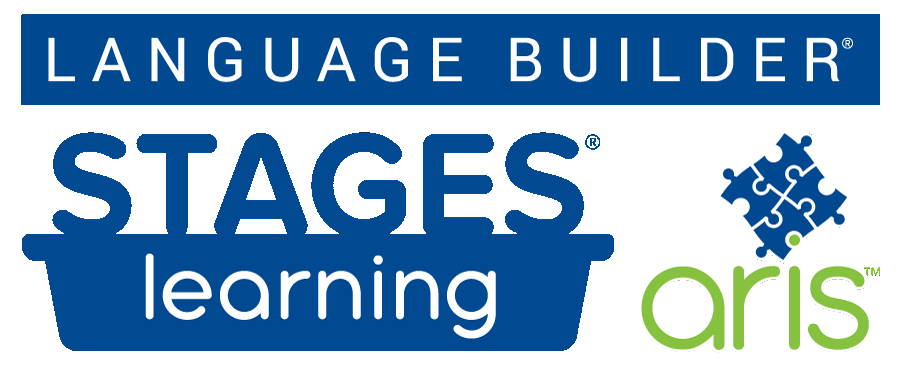
How can parents and teachers use fiction stories to positively explain and reframe autism to neurotypical and neurodivergent youth?
For children, autism is an increasingly complex concept to understand, starting from the condition’s traits to its longevity. This is where the power of stories and characters can be capitalized on as a means of explaining autism in a relatable way that simultaneously builds organic acceptance and validation.
Popular media such as Guardians of the Galaxy, The Little Mermaid, Spider-Man, Inside Out, and the infinitely notorious Frozen, can act as springboards to describe aspects of autistic traits in a nuanced but understandable way for youth. Furthermore, while these films may not be exact translations of autism, discussion of how the featured characters relate to both neurodivergent and neurotypical children alike is an invaluable part in the early development of compassion and the minimization of early-forming stigmas about autism.
Guardians of the Galaxy and Social Communication
The idea that heroes come from all planets and species is the central theme behind the ragtag alien superhero group in the popular Guardians of the Galaxy franchise, but within that team are two specific characters that can be used to explain autism traits to children.
The first is Drax the Destroyer, who as a character has had an overwhelmingly positive response from the neurodivergent community due to his signature neutral effect, honest comments, and literal thinking patterns. The second is the fan-favorite character named Groot, known best for his tenacious loyalty and his ability to communicate a wide range of information from three self-referential words, “I am Groot.”
Drax is a direct example of the social communication challenges autistic children may display including difficulty with conversation turn-taking, nonverbal cue use or interpretation, and speech intonation.1&2 Groot’s famous communication style can also be used to explain the use of augmentative and alternative communication methods by children with autism, as well as the concept of echolalia, which is the repetition of speech.
These characters can also fight the myth that autistic children do not have anything to communicate or cannot feel empathy. Much like how Drax and Groot communicate and interact differently, it can be explained that children with autism have different social styles but the same emotions.
The Little Mermaid: Making All Communication Forms Part of Our World
Another way to explain the communication forms of children with autism is through the classic Disney film, The Little Mermaid. In the movie, Ariel’s journey is filled with a duplicitous sea witch and singing marine life, but also with the notable plot point of a missing voice that is restored at the end of the film after finding love in the world above the ocean.
The challenge Ariel faces with communication above the sea is one way to illustrate the varying vocal speech abilities among children with autism. Like the titular character, autistic children may initially display skills or speech abilities, but these abilities may sometimes be reduced or absent, with skills development being a possibility.3
Additionally, Ariel can be used to develop empathy for children with autism who may be nonspeaking or minimally speaking, in that she possesses the same desire to communicate as everyone else but finds different ways to express her thoughts without speech.9
Spider-Man’s Spider-Sense and Secret Identity: Metaphors for Sensory Differences and Masking
Most children and teens can relate to Spider-Man’s heroism and Peter Parker’s school experiences. But, within the scope of autism, the friendly neighborhood web-slinger is a demonstration of sensory differences and masking through the familiar traits of his spider sense and secret identity.
It’s a common experience for children with autism to be over- or under-sensitive to stimuli, such as sounds or smells, but recent research has theorized that the resulting sensory overload may actually be due to their brain’s hypervigilance and difficulty with habituation, or reduction, of repeated stimuli.11 This real-life “spider-sense” can be an asset through the integration of sensory-seeking items, but it can also be challenging at times if it's overactive in the same way that it would be for Spider-Man.
Peter Parker’s secret identity is also helpful in explaining the more advanced and contentious concept of autistic masking or the intentional camouflaging of autism characteristics. Peter has to keep both his identities secret and separated for his safety and quality of life, similar to the functions of autistic masking to blend into society or prevent bullying. However, in the same way that it is exhausting for other costumed crusaders to maintain their separate identities, excessive masking can lead to burnout.
Spider-Man as a character not only aids in the explanation of these concepts but provides a rich framework of relatability and comprehension for neurotypical and neurodivergent youth.
Inside Out: Explaining the Ins and Outs of Overstimulation
Overstimulation and meltdowns are familiar terms to stakeholders, but for younger children, films like Inside Out can assist in explaining these autism terms as well as emotions in general that are depicted as living in the young 11-year-old protagonist’s head.
The five main sentient emotions depicted within Riley are Joy, Sadness, Disgust, Fear, and Anger. In the same way that a huge transition of moving to a new city causes Riley’s emotions to become unregulated and at odds with each other, a similar process occurs when an autistic child is experiencing overstimulation or a meltdown.
There are many forms and causes of overstimulation, but it can best be described as feeling overwhelmed due to the presence of unmanageable inputs or stimuli. When coping skills or situational exits aren’t effective, the result could be a meltdown or an external manifestation of internal stress.10 Unlike a tantrum, but similar to the plot of Inside Out, overstimulation and meltdowns are not intentional and can be difficult to manage once triggered.
Using the characters from the film, parents and teachers can explain the mechanisms, emotions, and anxiety that autistic children experience during these instances and how they may not have active control over their experiences at all times.
Frozen and Letting Go of Misconceptions
The Disney film Frozen has cemented itself as a hit among children through its catchy songs and ice magic. At the heart of the movie lies the story of two royal sisters, Anna and Elsa, bonded since childhood but disconnected by the danger of Elsa’s icy powers. Through sisterly love and the aid of a singing summer-loving snowman named Olaf, they ultimately find true acceptance within their kingdom.
Using Anna and Elsa’s initially strained relationship and the true reason behind it, adults can explain why autistic children may appear disconnected or disinterested in their siblings, classmates, or friends. These characters can help to further explain why children with autism may desire connection and friendship, while at the same time, their neurodevelopmental traits or anxiety about unpredictable factors could be preventing them from engaging as much as they would like.
Parents and teachers can also use the character of Olaf to emphasize that while autism is a lifelong condition, autistic children can certainly still thrive in any environment with the right adaptations and supports, similar to how Olaf’s eternal snow cloud helps him enjoy summers.
Autism Education and Validation Through the Power of Stories
The expansion of reference characters, beyond those that are written as autistic, enables adults to explain autism in an individualized and personalized way to children.

From intergalactic species to mermaids, these stories have the power to reframe all of the positive and challenging aspects of neurodiversity into an accepting mindset. Ultimately, contributing to the social inclusion and self-acceptance goals for individuals with autism themselves starting from a strong foundation in childhood into adulthood.
Stories have always been the way that children connect to and understand the world, and now, they can be used to help children connect to and understand autism as both a concept and identity.
What other characters can you use to help children understand and accept autism within their community? Share your ideas and insights in the comments section below.
References
- CDC. (2022, April 6). Diagnostic criteria. Retrieved October 4, 2022, from https://www.cdc.gov/ncbddd/autism/hcp-dsm.html
- Denworth, L. (2018, April 16). Social communication in autism, explained. Spectrum | Autism Research News. https://www.spectrumnews.org/news/social-communication-autism-explained/
- Dobbs, D. (2017, August 2). Rethinking regression in autism. Spectrum News. https://www.spectrumnews.org/features/deep-dive/rethinking-regression-autism/
- Drake, K. (2022, April 19). Masking in autism: The ‘why’ matters. Psych Central. https://psychcentral.com/autism/autism-masking-why
- Kaim, N. (2010, July 1). Four faces of overstimulation. Autism Spectrum News. https://www.autismspectrumnews.org/four-faces-of-overstimulation/
- National Autistic Society. (2020, September 2). Sensory differences - a guide for all audiences. Retrieved October 4, 2022, from https://www.autism.org.uk/advice-and-guidance/topics/sensory-differences/sensory-differences/all-audiences
- Patra KP, De Jesus O. Echolalia. [Updated 2022 Feb 19]. In: StatPearls [Internet]. Treasure Island (FL): StatPearls Publishing; 2022 Jan-. Available from: https://www.ncbi.nlm.nih.gov/books/NBK565908/
- Rothman, M. (2017, May 9). Why 'Guardians of the Galaxy Vol. 2' hero Drax resonates with the autism community. ABC News. https://abcnews.go.com/Entertainment/guardians-hero-drax-resonates-autism-community/story?id=47283398
- Villines, Z. (2021, November 28). Everything to know about nonverbal autism. Medical News Today. Retrieved October 4, 2022, from https://www.medicalnewstoday.com/articles/non-verbal-autism
- White, T. (2022, March 7). All about ‘autism meltdowns’: Why they happen and how to cope. Psych Central. https://psychcentral.com/autism/autism-meltdowns
- Zeliadt, N. (2019, July 29). Sensory overload in autism may stem from a hypervigilant brain. Spectrum News. https://www.spectrumnews.org/news/sensory-overload-in-autism-may-stem-from-hypervigilant-brain/





